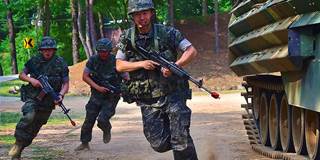China’s Road to Peace on the Korean Peninsula
US President Donald Trump has apparently decided to increase the pressure on North Korea, rather than make good on his campaign rhetoric and speak directly with North Korean leader Kim Jong-un. But the nightmare scenario of a violent conflict on the Korean Peninsula demands that cooler heads prevail.

BEIJING – A new crisis is brewing on the Korean Peninsula. In mid-February, North Korea conducted an intermediate-range ballistic missile test. On March 1, the United States and South Korea began a joint military exercise that is unprecedented in scale and intensity.